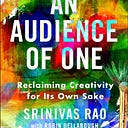How Life Should be Vs How it Could Be
Have you ever noticed that life doesn’t always turn out the way you thought it would? What has been different than what you expected?
Regardless of your age, chances are your life doesn’t look the way you thought it would by 25,30, 40, etc. Maybe you don’t have the significant other, family, or dream job you thought you’d have by now. In a million years, I never thought I’d be in my 40s, single, and living with two roommates who were in their 30s, quarantined because of a pandemic.
To understand how life could be, you need to explore the hidden dangers of irrational optimism, counteract it, and accept unpleasant truths and mourn your unfulfilled dreams to make room for new possibilities. Consider destiny as a two-sided coin and dream without a rigid vision.
Mourn Your Unfulfilled Dreams
I always tell my clients that there are times we have to mourn the way that we thought it would be because it’s a real thing the way that you thought it would be. -Terri Cole, Unmistakable Creative
When we don’t mourn the loss of our unfulfilled dreams and accept that they won’t come true in the way we thought they would, our temporary circumstances become our permanent reality. We cling to what no longer is possible or probable.
Every loss, whether it’s losing someone we love, or a dream that doesn’t come true creates an opening in our lives. How we fill that space will often determine if the future looks like the past. If we keep hanging on to how we thought life should have turned out, there’s no space for how it could turn out.
Coming to terms with the unrealized is like going through the stages of grief. You can’t change what is until you accept it. Like most things in life, this is easier said than done.
Let Go of Your Old Identity
Our identities are so deeply embedded in our unfulfilled dreams. To make space for how life could be, we have to let go of one identity and start building a new one.
In an interview, my mentor Greg Hartle described the process of letting go of an old identity as follows:
- First, acknowledge all the things you identify yourself as;
- Second, ask yourself what you want to be;
- Third, identify areas where your probability of success is high.
The third step is the most important of all. Delusional optimism leads to unrealistic expectations. This is why it’s important to balance what’s possible with what’s probable.
When your identity is what you do, then what you do becomes hard to abandon, because it means quitting who you are, says Annie Duke in her book, Quit: The Power of Knowing When to Walk Away.
After writing two books with a publisher and a year of working on a proposal for a third, it wasn’t in the cards. Even though I loved writing books, I had let go of my identity as an author. The creative life is a process of continual reinvention.
Everything you learn and do leads to transferrable skills that you can apply to whatever you do next. Writing two books with a publisher taught me everything I needed to know about making ideas happen.
I used the knowledge I gained from writing books to raise investor money, build an online course, and start a YouTube channel.
When you over-identify with any label it’s hard to see the difference between long-term potential vs immediate payoffs. Another book deal would give me an immediate payoff. But the long-term potential of providing a return for my investors, and growing the business was far greater than the money I would earn from writing another book.
Dream Without A Rigid Vision
Our motivations are heavily informed by the media or social feeds and are populated by endless images of wealth and travel power. Relaxation, beauty, pleasure, and Hollywood love. This Virtual runoff perpetually seeps into our consciousness polluting our sense of reality and self-worth. Every time we go online, we compare our lives to these largely artificial constructs and structure our plans accordingly, hoping to eventually afford a golden ticket to these misleading fantasies.- Ryder Caroll, The Bullet Journal Method
Often the visions we have for our lives are not truly our own, but the result of social programming, our need for external validation, and a socially approved standard for what our careers, relationships, and lives should look like. As a result, we’re imprisoned by and attached to a rigid vision for our lives. And we close ourselves off to anything that doesn’t look like exactly that vision.
Embracing how life could mean we need to forecast multiple possible futures. A rigid singular vision limits what’s possible. Being open to a multitude of ways life could look expands it.
We can’t control the future, but we can control how we respond to it. When we let go of our rigid vision, embrace how life could be, and focus on our probability of success, we can make space for the unknown. We can’t predict what will happen, but we can use our creativity and resourcefulness to make the most of whatever comes our way.
